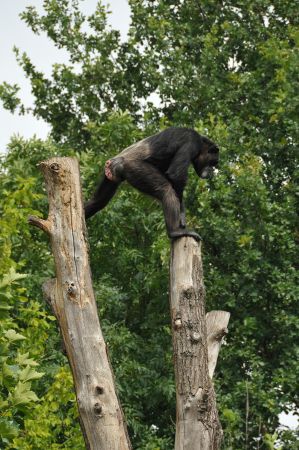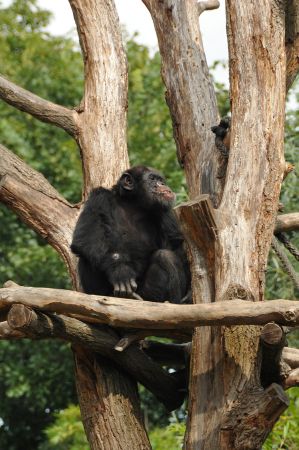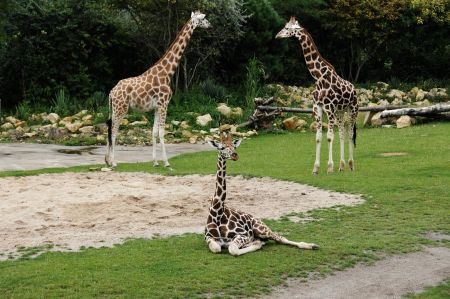The Zoo in Leipzig is a real magnet for visitors
- Written by Portal Editor
After our arrival in Halle in the evening, we and Detlef had set out a supporting program for the next few days, which also included a visit to the zoo in Leipzig.
In order to have as much time as possible for further sightseeing, we planned the trip to Leipzig for the early morning of the next day. It was only a short journey to the zoo grounds via the autobahn past Halle / Leipzig Airport. We had heard from the media several times about the structural changes in the zoo in recent years and were now looking forward to the completed conversions.
Founder of the zoo, the Leipzig innkeeper Ernst Pinkert

Ernst Pinkert had been the owner of the restaurant "Zum Pfaffendorfer Hof" since 1873, where he exhibited a selection of exotic animals as an attraction for his guests.
Pinkert had been in close contact with his Hamburg friend and pet dealer Carl Hagenbeck for a number of years, so the two animal lovers organized the animal exhibitions together.
Only a little later, Pinkert founded the 23rd zoo in Europe on his council estate in Pfaffenhofen, where he also began building the old predator house right at the beginning of the foundation.

In 1883, the zoo grounds were successfully expanded to 3 hectares.
At the beginning of 1899, the former private company was transformed into the joint stock company Zoologischer Garten Leipzig with the side effect of new sources of money, which were used to build the new predator house, the monkey house and the administration.
After Pinkert's death on April 28, 1909, Johannes Gebbing from Westphalia was appointed zoo director. Through his construction of the aquarium and the terrarium, new species could be integrated into the Leipzig Zoo.
Giant tropical hall Gondwanaland based on the ancient continent
Of course, we had heard from the press releases about the construction of the giant tropical hall Gondwanaland based on the supercontinent of the southern hemisphere of our earth. The impressive height of the hall construction alone of 34.5 meters was visible from afar and is considered to be the zoo's most expensive construction project to date. The tropical hall, which has been open to the public since July 1, 2011, was only possible due to the enlargement of the site by blowing up the former sorting building of the Kammgarnspinnerei on Pfaffendorfer Straße. The additional area has increased the zoo area to 26 hectares.
Visitors glide through the tropical forests in guided boats
It was probably due to the crowds of visitors that it was difficult to find the numerous animal species in the tropical house at all. So we quickly came to the conclusion that the real observation of the animals is probably only possible on a calmer day. A day of the week is more suitable for this, as it simply shows the animals are more relaxed. We also found this out in other areas of the zoo, where some of the animals had withdrawn very far from the crowds. We didn't really like this crowd either, because sometimes there was hardly any space to get to the facilities alone.
Cooperation project with the Max Planck Institute for Evolutionary Anthropology
The naming was based on the scientific generic name of the orangutan Pongo. With a total area of 30,000 m2, Pongoland is now the world's largest great ape facility, which also includes the Wolfgang Köhler Primate Research Center.
Even the warm house with its five indoor enclosures for orangutans, gorillas, groups of chimpanzees and the yellow-cheeked gibbon lady measures an impressive 3,250 m2.
In general, most of the enclosures cannot be completely dismissed, despite the problem of the “animal exhibition”, which naturally also exists here.
But the efforts to implement new concepts have been very successful and you can see the dedication with which people work here, especially in the details. Of course, the meerkats also particularly impressed us.
One often wondered who was the observer and who was the exhibitor.
Our conclusion is clear: A real magnet for visitors, which, however, should better be visited on a weekday to really observe the animals. Only when the crowds are less strong do you have the peace and serenity that is necessary for extensive observation. Then, however, one encounters a colorful diversity of species that is hardly presented anywhere else so well and explained so vividly a second time. This applies in particular to the really impressive underwater world. Despite the crowds, we really enjoyed visiting the Leipzig Zoological Garden.
Please also read as well:
Amazonia in the Panometer of Leipzig
Ereğli - Kerberos and the Cehennemağrazı cave
https://www.alaturka.info/en/germany/saxony/5679-the-zoo-in-leipzig-is-a-real-magnet-for-visitors/amp#sigProId672dec3bd3
